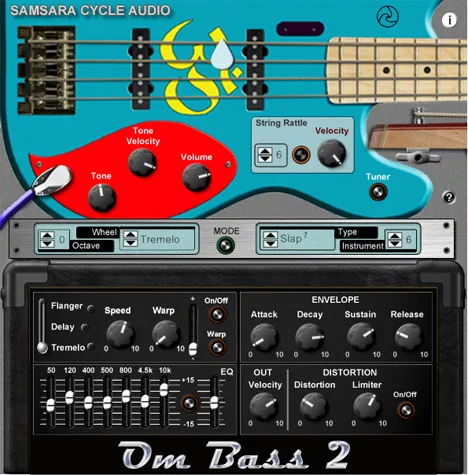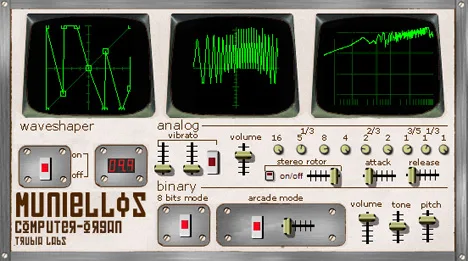Extended DSF Algorithms: An Innovative Approach to Sound Synthesis
Sound synthesis is a continuous search for new ways to create and shape audio. The Extended DSF Algorithms plugin presents one such innovative approach, based on a powerful mathematical concept — Discrete Summation Formulae (DSF). It’s not just another virtual instrument, but an open set of integrated algorithms designed to showcase the capabilities of DSF in generating complex audio signals.
Theoretical Foundations and Practical Implementation
The essence of Extended DSF Algorithms lies in finding the closed form of harmonic summations. Traditionally, creating multi-overtone waves can lead to undesirable artifacts, such as aliasing, especially at high frequencies or rapid parameter changes. DSF allows the generation of bandlimited waveforms directly or by composing several algorithms. This is achieved through precise mathematical calculations that allow for the control of the amplitude and phase of each harmonic component with high precision, even with arbitrary offsets relative to the fundamental frequency.
The plugin demonstrates how, with Extended DSF, a wide range of sounds can be created: from simple classic waves to extremely complex, animated effects, reminiscent of the capabilities of advanced additive synthesizers. All these advantages are obtained due to the natural band limitation and efficiency of closed-form formulas, avoiding the need for additional filters to remove aliasing at the generation stage.
Demonstration of Key Functions
Despite the fact that the plugin is aimed at developers, it visualizes some interesting algorithmic capabilities:
- Self-Filtered Waveforms: Using exponential and linear functions, the algorithm changes the shape of the wave as if a filter has been applied to it, although in fact there is no separate filter. This illustrates how complex mathematics can simulate processing effects at the generation stage.
- Phase Rotating Sawtooth: This algorithm allows for a smooth transition between different phase configurations of the sawtooth wave, changing its shape and timbre. This demonstrates the influence of phase relationships on the perception of sound.
For self-filtered waves and the phase-rotating sawtooth, control is available via the modulation knob, allowing you to experiment with the parameters and observe their effect on the waveform and sound. Other implemented waveforms in the current demonstration do not support modulation.
Target Audience and Purpose
IMPORTANT: As already mentioned, the Extended DSF Algorithms plugin is intended EXCLUSIVELY for developers and is a demonstration of the operability and potential of DSF algorithms. It is NOT INTENDED for use in music production.
This is a tool for research, learning, and experimentation with new approaches to digital synthesis. It provides an opportunity for specialists in the field of audio programming to delve into the details of implementing DSF algorithms and, possibly, use these ideas to create their own, more advanced synthesizers and effects in the future.
Download and Explore
Extended DSF Algorithms is available in VST and AU formats and supports Windows (Win32/Win64) and MacOS (OSX) operating systems. For those interested in the mathematical foundations of sound synthesis and eager to explore advanced algorithms, this plugin is a valuable resource. It opens the door to a deeper understanding of how complex mathematics can be applied to generate high-quality, bandlimited sound, paving the way for future innovations in the world of virtual musical instruments.



